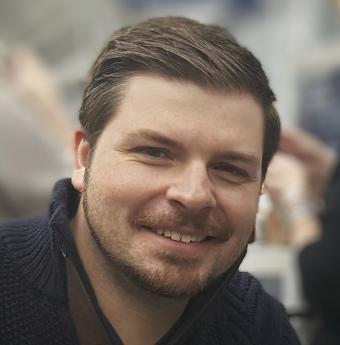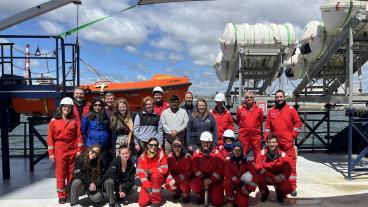Mines professor named to prestigious cohort of experimental physicists for subatomic research
Kyle Leach, associate professor of physics, was awarded a grant by the Gordon and Betty Moore Foundation

A Colorado School of Mines professor is among the inaugural cohort of experimental physicists to receive a grant from the Gordon and Betty Moore Foundation.
Kyle Leach, associate professor of physics, was awarded $1.25 million over the next five years to support his fundamental investigation of the subatomic world using radioactive isotopes implanted in superconducting quantum sensors.
“I am very grateful to the Moore Foundation for this award. This opens an avenue for our research group to explore the highest impact cases and develop this new class of experiment,” Leach said. “Through this work, we can better understand where the standard model of particle physics - the overarching model we use to describe the building blocks of our Universe - fails. How and where it fails is a way into understanding our cosmic history and future.”
The Electroweak Interactions Group, which Leach leads at Mines, focuses on performing precision measurements of nuclear decay to probe the fundamental interactions of nature.
“The success of this work thus far is in large part due to the wonderful Mines students that have worked on the project over the last few years,” Leach said. “We’re in the early stages of making these measurements and this award goes a long way to realizing what we think will be a transformative concept.”
Leach and his team will be conducting much of the research at Michigan State University’s Facility for Rare Isotope Beams (FRIB), where they’ll be able to precisely measure exotic radiation from the shortest-lived atoms. Some of these rare isotopes being investigated have a half-life of a fraction of a second, so the team requires a facility like FRIB that can produce, deliver, and measure in that small of a time period. Some of the work is also being done in partnership with the Lawrence Livermore National Laboratory in California and TRIUMF in Canada.
The 16 scientists selected for the initial Moore Foundation cohort are all at a critical time of their careers, directly following their attainment of tenure. The foundation hopes the funding allows the physicists to concentrate on their research and build collaborative relationships that enable innovative discoveries. Some of the other research topics being supported include quantized vortex lines in superfluid liquid helium, optical properties of nanostructures in butterfly wings and infrasound signatures of tornados.
“It’s critical to support not just those who have had opportunities and resources to excel, but to support adoption of practices that will expand access to these opportunities in the future,” said Catherine Mader, program officer in the Experimental Physics Investigators Initiative at the foundation. “Helping these researchers find resources and adopt practices to enhance equity and inclusion is an important way the foundation can help all group members produce their best science.”
The Gordon and Betty Moore Foundation is driven by the vision of its founders to enable lasting, meaningful change through sustained, scientifically sound philanthropy. Established in 2000, the foundation is based in Palo Alto, California.




